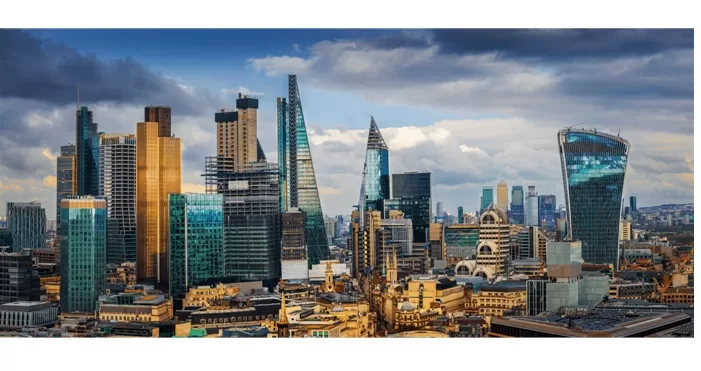Real Estate
Implications of COVID-19 Aftermath on Real Estate Sectors

Social distancing has significantly dented the demand for various types of space, creating an unprecedented crisis for the real estate industry.
Manifestations on Real Estate
The way of life which we once knew, has morphed in ways that we could never have imagined. People can no longer meet, work, eat, shop, and socialise as they used to. Businesses transformed quickly from business-as-usual to office shutdowns, restrained travel, and work-from-home mandates. Instead of heading out for meals at restaurants, consumers worldwide are tightening their purse strings to spend only on necessities. Social distancing has directly affected the way people live and interact with physical space, and that has dramatically dented the demand for various types of activity, creating an unprecedented crisis for the real estate industry. Beyond the immediate challenges, the longer this crisis stretches, the more likely we are to witness transformative and lasting changes in behaviour.
Many real estate players have begun with decisions that protect the safety and health of all employees, tenants, and other end-users of space. The shrewd ones will now also think about how the real estate’s playing field may transform, and alter their strategies to strengthen their positions through this crisis. Many industry professionals have begun to change their game plan while patiently awaiting the dust to settle, before making any big moves. This is evident from the amount of capital raised in Q1 2020, which fell by 65% as compared to the same period last year.
COVID-19 Shock to Various Property Sectors
The Impact of COVID-19 on Office Space
The long-term effects of the COVID-19 may reshape the landscape of how corporates are organised. Amongst its other consequences, this pandemic has created a new paradigm and diversions for the office market. Companies have begun to rethink the trade-off between working from home and conventional offices. Already, big tech firms like Google and Facebook have allowed employees to work from home until 2021, while Twitter has gone further to eternalise the policy. That said, it is clear that demand and use of office space would be altered and landlords have to be nimble to address such changing patterns.
Here, we will discuss the potential trajectories that lie ahead once the pandemic wave begins to fade. Starting with the obvious, home office will be considered as a feasible alternative to taking more office space. Current regional centres and business parks may see growing demand by companies setting up satellite offices. This is a step to de-risk from over-concentration at specific locations or buildings. Co-working and serviced offices may also spread to the regional hubs to address the flexible spatial demand by companies. Ultimately, technology companies that help enable remote working may, due to decentralisation, get a boost for their services, leading to more tech companies setting up operations and occupying business spaces in crucial regions.
The direction of where office demand is heading next will be defined not only by the ability of governments and financial institutions to manoeuvre the ongoing crisis, but also the potential materialisation of structural modifications on workspace management. Regardless, there is no denying that physical office remains a principal medium in facilitating interaction and collaboration and, vitally, employee health, well-being and productivity.
The Impact of COVID-19 on Retail Space
Clearly, the top casualties of COVID-19 are the travel-related industries, which permeates down to the tourism and retail sectors. The outbreak has only accelerated the structural changes in the retail industry that was already taking place before the pandemic. Changing behavioural patterns of consumers and shoppers towards online retail has claimed some big merchants, retailers and F&B companies who were already under pressure. Prominent brands such as Neiman Marcus, JCPenney, and J. Crew have since filed for bankruptcy, with more expected to bite the dust. Looking ahead, the bigger question is how the retail industry will move on once this nightmarish episode passes. For one, many retailers will rethink their operations and supply chains. As the structural transformation in the retail market fast-tracks, greater focus will be placed on the shift toward a more flexible omni-channel retail model and sustainable fulfilment. From the observation of consumer behaviour during these times, having the appropriate infrastructure for fulfilling online orders continues to be essential for trading.
For some landlords, this pandemic could change the way rents are structured. Currently, most retail rents are derived primarily from base rents, with some taking a slice of the shop’s gross turnover (GTO). In light of the virus outbreak, retail asset owners have to face up to reality and make the shift toward a more significant GTO-reliant rental model to align their interest with tenants better. Owners of malls in Hong Kong, Malaysia, and Indonesia are already progressively adopting GTO and hybrid rental models. Certainly, malls also have a strong social dimension for people to socialise and be entertained. This aspect of retail will probably not disappear. The emphasis on entertainment and F&B services will only grow stronger and retail landlords have to think more creatively to reap potential upsides. There will be major implications in mall design, tenant mix, tenant selection, branding, and ultimately economic viability of malls as an investment asset class. Landlords must be prepared to take a more proactive approach in asset management or even retail management, as well as in running their malls to maximise potential upside rewards. The COVID-19 outbreak has opened up an opportunity for change, and a much-needed one. Otherwise, when the retail scene stabilises, even to pre-crisis levels (which wasn’t exactly rosy), the old ways return and the plodding attrition resumes.
The Impact of COVID-19 on Residential Property Sector
The consensus so far is that residential will stand firm. The immediate effect on the ground – as reported by real estate agents – is that they see an increase in demand for homes that cater to home offices, be it in small or big cities. Buyers are becoming more concerned about whether there is sufficient room and space to set up work and gym stations at home, as well as requiring a high-speed internet connection. This has prompted home designers and architects back to the drawing board to develop creative solutions for such evolving preferences.
Proven to be highly resilient, the multifamily sector experienced the lowest level of rent decline, the fastest recovery to pre-recession peaks and the most prolonged post-recession period of rent growth in the 2001 and 2008 recessions. Likewise, this sector is expected to emerge from this crisis relatively unscathed, though it will be contested should rising unemployment begins to weaken rental demand. The prevalent use of income protection schemes will aid to lessen the impacts, provided that they remain relatively short in duration. Looking to China as guidance, should economic activity become more widespread once social distancing policies are eased, there is a rational expectation that incomes will be sustained. Currently, risks are skewed toward lower-income rental properties, where workers are mostly unprotected from structural unemployment effects. Highly susceptible households are expected to rely on government income support and, as a result, household financial conditions will be linked to the vigour and effectiveness of national policy measures.
The Impact of COVID-19 on Travel and Hospitality Sector
Since the outbreak of COVID-19, international travel has ground to a complete halt, with many airlines and cruises cancelling their schedules for many months. Once the industry begins to recover, travel behaviours are likely to shift toward less dense destinations where holidaymakers can be in open spaces and stay away from large crowds. The kinds of accommodation that travellers will gravitate to may also change. The psychological impact on travel pattern can be likened to the aftershock of the 9/11 terrorist attacks. People have become more aware of being in near distance to one another and are afraid of contracting the virus in public spaces, especially those with lower standards of hygiene. Alternative accommodations are also expected to face mounting scrutiny and pressure from visitors who are anxious with their health and well-being. This could lead to the dispersion of tourist hotspots to lesser-known areas and the development of new resorts with the more excellent spatial distribution.
What the Future Holds for Real Estate
Economic Recovery
The current pandemic has hit the world’s economy at a time of weakening global growth, heightened geopolitical tensions and a vaster divergence away from globalisation. Unlike the Great Financial Crisis (GFC), there is no coordinated international effort to tackle the virus as some nations turn inward towards nationalism and protectionism. Three factors will determine the depth of economic recession; they are the degree of isolation and social distancing measures, the duration for which they are in place, and the fiscal and monetary policy response. At the time of writing, it is still difficult to provide a precise forecast of where the global economy is heading, and there seems to be no consensus even among economists as to which path this economic recovery will take shape.Nevertheless, taking into account this level of uncertainty, four recovery scenarios have been identified – V, U, W and L shapes.
The V-shaped recovery is based on a relatively short period of containment measures (approx. 1 to 3 months) followed by a quick restoration to economic growth with little second-order effects such as bankruptcy and unemployment. At first, many economists believed this to be the base case, but as time passes, it has become more evident that this is an unlikely scenario.
The U, W and L-shaped recovery paths all envisage some lasting adverse impacts that leave economic traumas and affect the productive capacity of the economy. They are also expected to reflect a long downward shift in economic activity. In these scenarios, a full-fledged economic recovery will not be near in sight; it could take up to a year or more for markets to regain its former vigour.
Real Estate Investment
Currently, even though the debt markets have ample liquidity, lenders are mainly focused on ‘price discovery’ and are shifting to manage their existing portfolios. This includes conceiving specific policies and procedures on how to best formulate and support forbearance requests. The stabilisation of the cost of debt will be pivotal to the revival of transactional activities, and the debt market is likely to remain healthy, given the stability of the credit markets as compared to the GFC.
Aligned with the decline in transaction volume, most capital raising activities are expected to be on hold. The amount of dry powder continues to be at peak levels (US$330 billion), and investors are in fact, increasing their target allocations to real estate to be ready to capitalise on impending market dislocation. While real estate investment has fluctuated over the years during various downturns, the general trend has been for higher allocations towards this asset class, and there are no indications for this trend to reverse.
Real estate continues to offer compelling risk-adjusted rewards that are less correlated to other asset classes. This portfolio diversification benefit of real estate is only magnified in times of heightened instability in the equities markets, where equity volatility is more than two-fold that of real estate during this crisis. Furthermore, the spread between real estate yields and government bond yields remains at levels that more than adequately reward real estate investors. As such, we anticipate capital flows into real estate to remain robust over the medium to long term.
Source: RealVantage. Find out more about RealVantage, visit our team, check out our story and investment strategies.
RealVantage is a real estate co-investment platform that allows our investors to diversify across markets, overseas properties, sectors and investment strategies.
Visit our main site to find out more!

























































